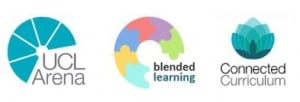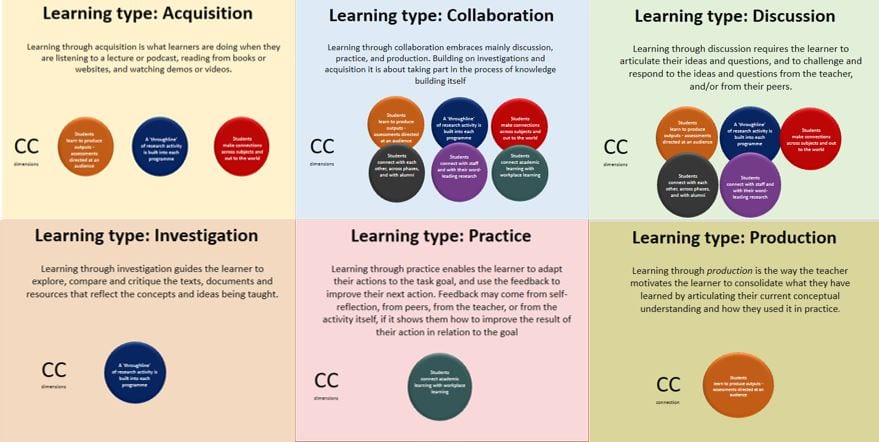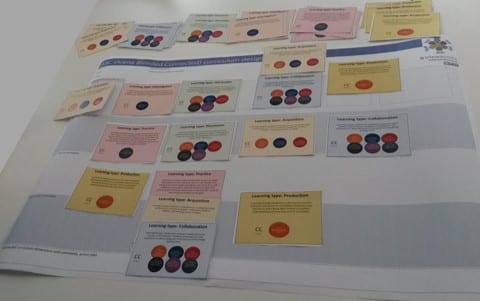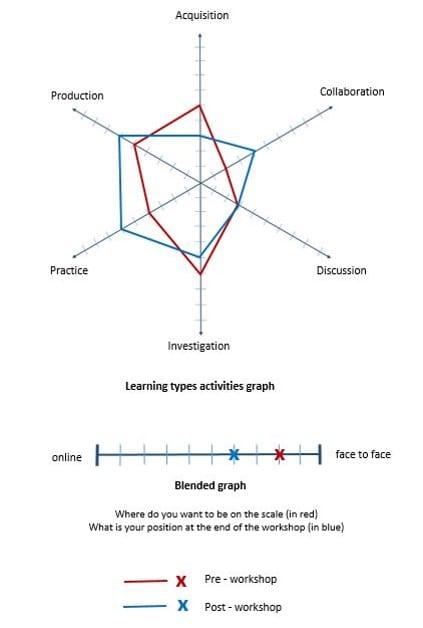ABC Curriculum Design Workshops
By Natasa Perovic, on 30 September 2015
(For latest news about ABC LD, visit ABC LD blog)
Arena Blended Connected Curriculum Design – Workshop resources and participants’ feedback
- A 90 minute hands-on workshop to help module teams design engaging learning activities.
- Teams work together to create a visual ‘storyboard’ showing the type and sequence learning activities required to meet the module’s learning outcomes and how these will be assessed.
- ABC is particularly useful for new programmes or those changing to an online or more blended format.
Between March and September we had 11 workshops with 37 teams from SLMS and BEAMS.
The feedback from participants:
- “This process was really useful. It helps us think about the modules in their entirety. It is really good how everything maps out in a clear framework like this.“
- “We haven’t had such level of detailed discussion as a team. I think the structure and the materials are facilitated well. “
“It is a good way of focusing on creating the balance within a course.“ - “It makes you think about: OK , we are going to use this technique, but where, how, for what and how does it fit with everything else? And this is the way into that, I think.“
- “It helped us formulate in our own mind the course structure. Yes, very useful.“
- “Made me more conscious of a formative assessment, which really did not occur to me before. “
- “This has been extremely useful. Not only that we start to think about individual modules and how we can use electronic resources, but it makes us think about the degree together, rather than as separate modules. “
- “It reminds you of all different formats that you can use, rather than sticking to the same old same old.“
- “I think it was good to take a step back from the content and look at the varied type of activity. “
- “We are not trying to be very innovative, but it is a question of being open to new ideas“
To organise ABC workshop for your programme contact Clive Young and Nataša Perović.
ABC Curriculum Design workshop resources:
- ABC CD leaflet – PDF –
Loading...
- ABC Curiculum Design workshop Presentation
Loading...
- ABC CD graph blend – PPT
Loading...
- ABC learning types cards – PPT – (print double sided, two a page)
Loading...
- ABC additional online activities – PDF –
Loading...
- ABC CC and learning types – PDF –
Loading...
- ABC CD worksheet lansdcape A1 – PDF –PPT –
Loading...
Loading...
- ABC CD workshop facilitation plan – Word –
Loading...
- ABC Action plan – Word –
Loading...
The resources are also adapted for ABC CPD and Life learning courses.
To organise ABC workshop for your programme contact Clive Young and Nataša Perović.
More:
- ABC 2015 Summary
- ABC beginnings
References:
**UCL IoE: Laurillard, D. (2012). Teaching as a Design Science: Building Pedagogical Patterns for Learning and Technology. New York and London: Routledge.
 Close
Close





 ISD E-learning Environments are delighted to be hosting Laurie Burruss from lynda.com who will be running three exciting workshops for us on 3rd September 2015.
ISD E-learning Environments are delighted to be hosting Laurie Burruss from lynda.com who will be running three exciting workshops for us on 3rd September 2015.







